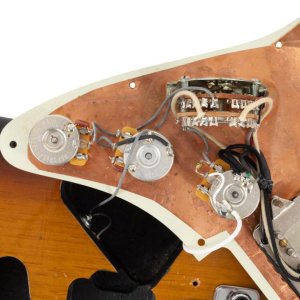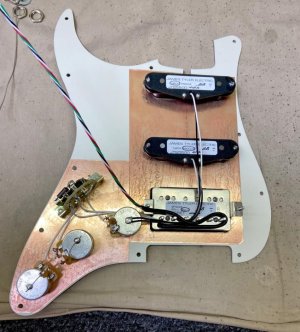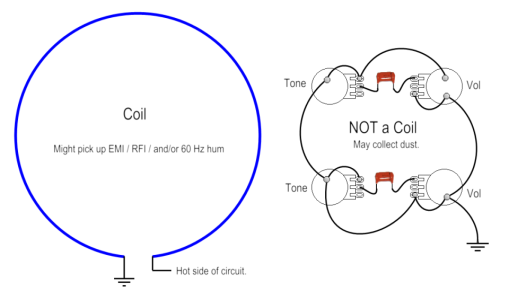Hi!
I wonder if ground loops are actually possible in wiring.
There is a ton of material on the internet both for and against.
It seems stupid, because looking at the loaded pickguard seymour duncan, dimarzio, fende, they make ground loops.
The potentiometers get ground through the shielding, and are connected by cables.
I've noticed that I really like the sound of Suhr and James Tyler guitars, I think they're top-shelf to my ears.
I analyzed the pictures of the pickguards and electronics and it turned out that both avoid ground loops. The potentiometers have grounds given only through the shield.
I wonder if this is a factor that has a positive impact on the sound.
I don't think they're saving on a piece of cable. It seems they're not connecting the potentiometer housing with justification.
James Tyler pickguard (no ground wire/ no ground loops)
Suhr (no ground loops)

James Tyler (no ground loops)

I wonder if ground loops are actually possible in wiring.
There is a ton of material on the internet both for and against.
It seems stupid, because looking at the loaded pickguard seymour duncan, dimarzio, fende, they make ground loops.
The potentiometers get ground through the shielding, and are connected by cables.
I've noticed that I really like the sound of Suhr and James Tyler guitars, I think they're top-shelf to my ears.
I analyzed the pictures of the pickguards and electronics and it turned out that both avoid ground loops. The potentiometers have grounds given only through the shield.
I wonder if this is a factor that has a positive impact on the sound.
I don't think they're saving on a piece of cable. It seems they're not connecting the potentiometer housing with justification.
James Tyler pickguard (no ground wire/ no ground loops)
Suhr (no ground loops)

James Tyler (no ground loops)


